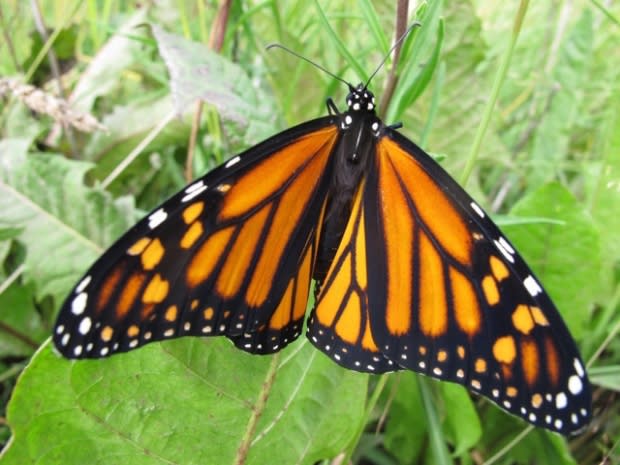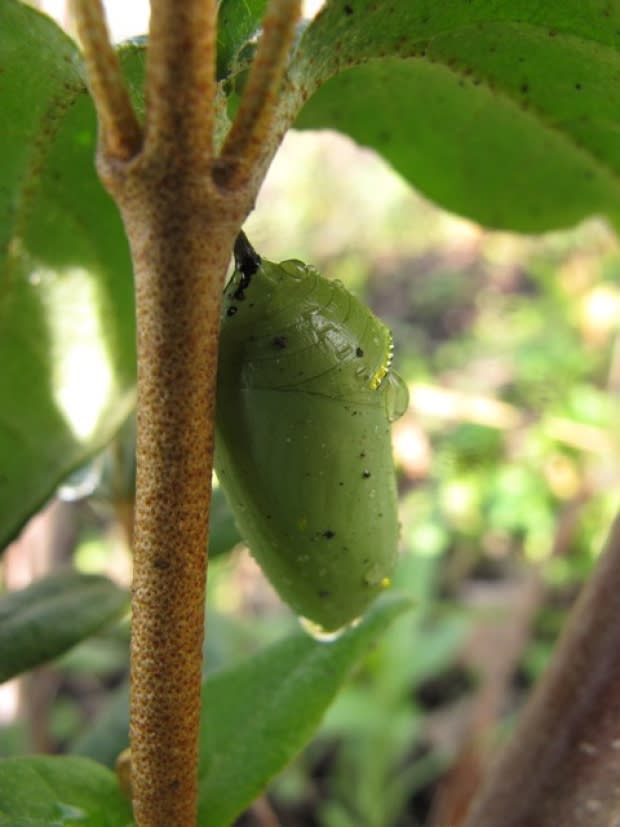On the wings of hope: Luring the elusive monarch butterfly to Edmonton
Mary-Jo Gurba-Flanagan has never seen a monarch butterfly.
Now she hopes to build a breeding ground for them right here in Edmonton.
In the Hazeldean neighborhood near Mill Creek ravine, Gurba-Flanagan has put plastic fencing around two small patches of low milkweed (monarchs will only lay eggs on the plant, and the larvae feed on it).

The fencing is to keep city mowers, who trim the grass in the field, from cutting down the milkweed.
"The milkweed feeds many butterflies but the most well-known is the monarch," said Gurba-Flanagan, a member of the Edmonton Native Plant Society.
"I would love to see (the monarchs)," she said. "Especially if we have enough milkweed to support them, so they could come in larger groups."
The last time monarchs were seen in Edmonton was 2012, when they were "blown off course" and the city saw many of them, said Felix Sperling, a professor of biological sciences at the University of Alberta.

The butterflies usually make it here every two decades, though Sperling said he has only seen them once in 40 years of watching.
Two other species, Canadian tiger swallowtail and viceroy, are often mistaken for monarchs.
"The monarch is such a magical species it catches people psychologically," Sperling said. "It's story is so interesting that people are seeing monarchs all over the place in Alberta that are not really monarchs."

Despite a wing span typically less than 10 centimetres, monarchs commute from their wintering grounds in Mexico thousands of kilometres north to Canada and the U.S.
Almost all of them end up along the eastern half of North America. Those that head west rarely venture further than southern Alberta. Most years they make it as far as Medicine Hat, said Sperling.
The journey takes several generations. The monarchs that return south are the great-grandchildren of the ones that left.
The number of monarchs leaving Mexico had been declining over the last decade, mostly as a result of deforestation of conifer forests in Mexico, Sperling said. But the numbers now appear to be growing, he said.
About a dozen sanctuaries are now in Mexico and have become tourist attractions from mid-November through March, with the population of monarchs peaking in February.
"When you look up, you see these massive clusters the size of two people," said Edmontonian Jasmine Hohenstein. "Thousands and thousands of butterflies all clustered together. It's amazing."
In February, Hohenstein and her husband travelled to Piedra Herrada Sanctuary about 100 kilometres north of Mexico City. She called the visit a "must do" on her bucket list.

At the sanctuary, guides take tourists either on foot or on horseback up a hillside to an elevation of 9,000 feet.
As the sun comes up, the clusters of butterflies in the trees begin to fly, Hohenstein said.
"You hear this chur, chur, chur, chur chur, because they're all starting to fly at once, and it's otherworldly," she said. "It looks like it's snowing butterflies."
It's estimated the sanctuary is home to 35 million monarchs over the winter.
'Sense of hope'
Efforts to preserve low milkweed and other native plants have been going on for decades, said Gurba-Flanagan.
In recent years, the Edmonton Native Plant Society has worked with the city through its Partners in Parks program.
"I give the city kudos for trying to protect more of the natural areas around the city," she said.
The effort to preserve low milkweed is partly because it's a native plant and partly because of the monarchs, Gurba-Flanagan said.
Whatever happens, the work to cultivate milkweed in Edmonton won't be in vain, Sperling said.
"If your purpose is education, awareness, building a sense of hope — as long as people know what they're up against, maybe it's worth it," he said.

